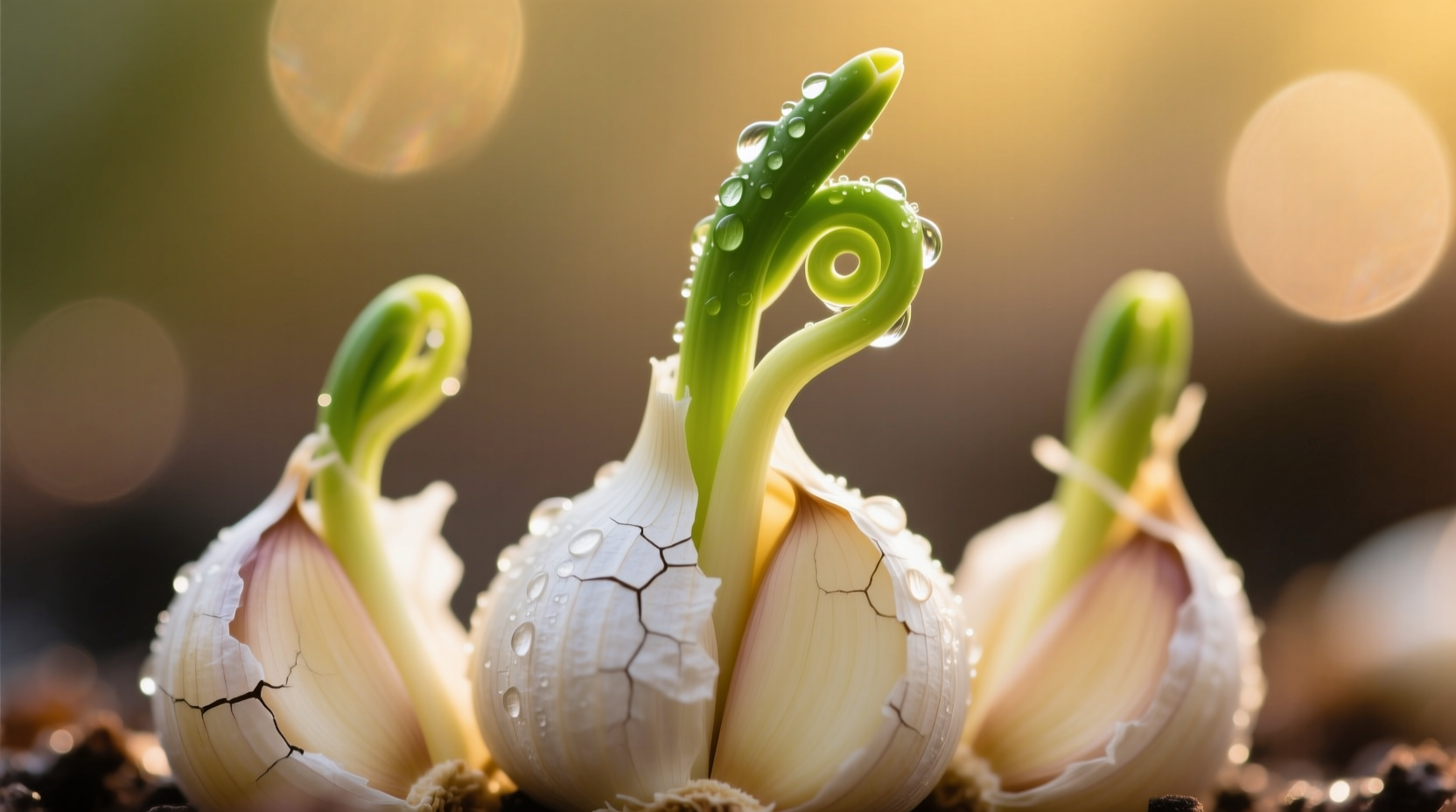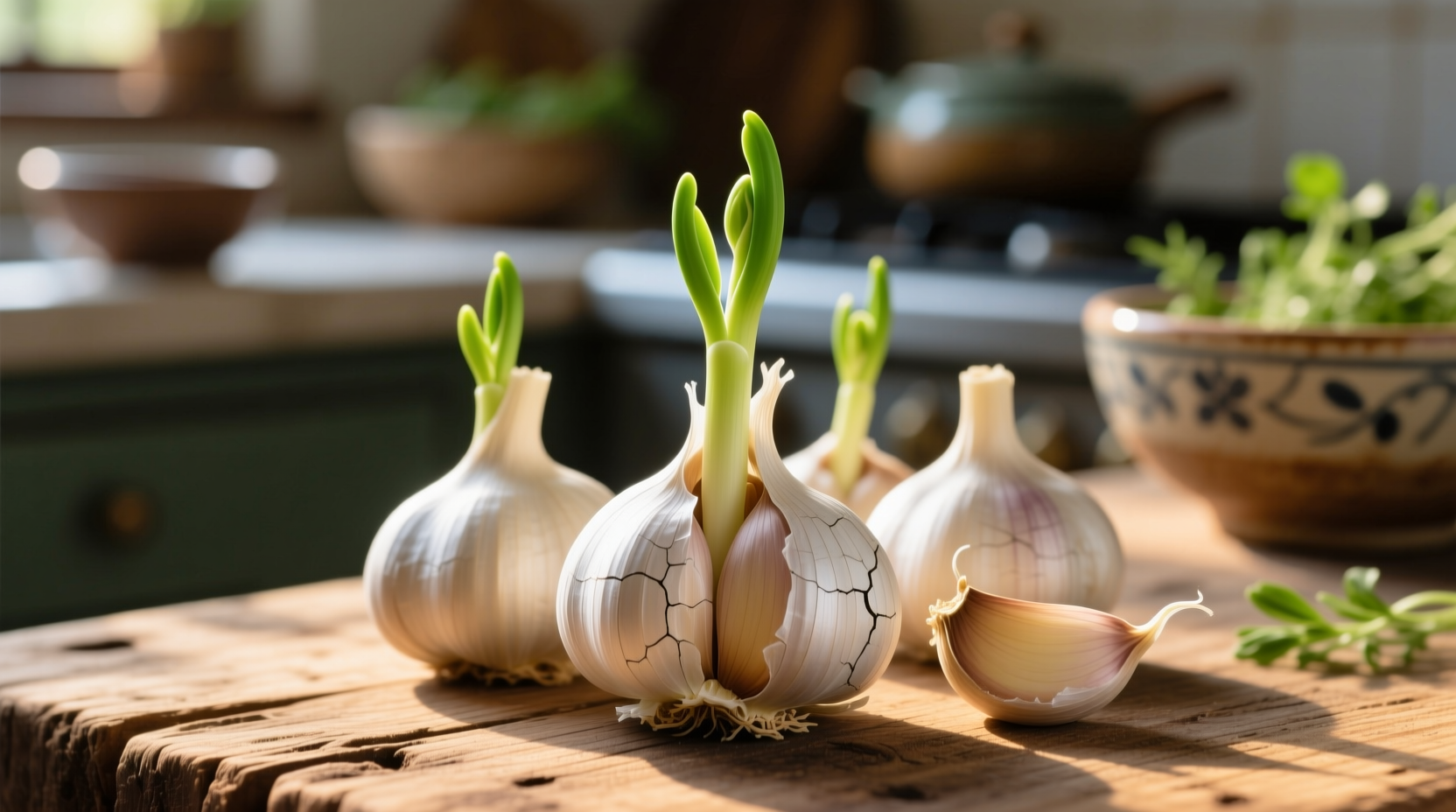Yes, you can safely use sprouted garlic—it's not harmful but has altered flavor and texture. The green sprout inside indicates aging, not spoilage. While perfectly edible, sprouted garlic develops a slightly bitter taste and reduced potency compared to fresh cloves. Properly stored sprouted garlic remains usable for cooking, though we recommend removing the central sprout for best results in most dishes.
Discover exactly when sprouted garlic is safe to use, how to maximize its culinary potential, and when it's time to discard it—plus professional storage techniques to extend freshness. This guide delivers actionable insights from food science research and culinary expertise to help you reduce kitchen waste while maintaining flavor quality.
Understanding Garlic Sprouting: What's Happening Inside
Garlic sprouting occurs naturally as cloves age and seek to reproduce. When stored in warm, humid conditions, the dormant clove activates its growth cycle, sending a green shoot through the center. This biological process consumes the garlic's stored starches and sugars, gradually changing both texture and flavor profile.
According to USDA food safety guidelines, sprouting represents a natural aging process rather than spoilage. The Food Safety and Inspection Service confirms that sprouted garlic remains safe for consumption as long as no mold or soft spots develop.
| Characteristic | Fresh Garlic | Sprouted Garlic |
|---|---|---|
| Flavor Profile | Rich, pungent, balanced | Milder with bitter notes |
| Texture | Firm, crisp | Softer, sometimes spongy |
| Allicin Content | High (optimal) | Reduced (up to 30% less) |
| Shelf Life Remaining | 3-6 months | 2-4 weeks |
When Sprouted Garlic Is Perfectly Safe to Use
Sprouted garlic becomes unsafe only when accompanied by visible mold, slimy texture, or foul odor. The sprout itself—while altering flavor—is completely edible. Food science research from the National Institute of Food and Agriculture shows that the green shoot contains different compounds than the bulb, explaining its slightly bitter taste.
Professional chefs routinely use sprouted garlic in specific applications where its milder flavor profile works to advantage:
- Roasted dishes—heat transforms bitter compounds into complex caramelized notes
- Long-simmered sauces—bitterness dissipates during extended cooking
- Garlic-infused oils—sprouts contribute unique herbal notes
- Pickling projects—acidic environment balances flavor changes

Practical Techniques for Using Sprouted Garlic
Maximize your sprouted garlic's potential with these chef-recommended methods:
Removing the Central Sprout
For most applications, removing the green shoot improves flavor balance. Simply:
- Peel the clove
- Locate the green sprout running through the center
- Use a paring knife to split the clove lengthwise
- Gently lift out the sprout with the knife tip
This technique works particularly well for raw applications like salad dressings or aioli where bitterness would be most noticeable.
Culinary Applications That Embrace Sprouted Garlic
Certain dishes actually benefit from sprouted garlic's unique characteristics:
- Garlic scape pesto—blend the green sprouts with basil for a spring-inspired variation
- Vegetable stocks—adds subtle herbal notes without overpowering
- Roasted garlic spread—sprouts contribute complexity when caramelized slowly
- Compound butters—mix minced sprouted garlic with herbs for grilled meats
When to Discard Sprouted Garlic: Clear Boundaries
While sprouting itself isn't dangerous, these conditions indicate garlic should be discarded:
- Mold presence—any fuzzy white, green, or black growth
- Soft, mushy texture—indicates advanced decomposition
- Foul odor—sour or ammonia-like smells signal spoilage
- Yellow or brown spots—within the clove indicates rot
Remember that sprouted garlic has reduced shelf life. Once sprouting begins, use within 2-3 weeks for best quality. The FDA Food Code recommends discarding any produce showing multiple signs of deterioration.
Preventing Premature Sprouting: Professional Storage Methods
Extend your garlic's freshness with these evidence-based storage techniques:
- Airflow is critical—store in mesh bags or wire baskets rather than plastic
- Ideal temperature—60-65°F (15-18°C) with 60-70% humidity
- Avoid refrigeration—cold triggers sprouting in whole bulbs
- Separate from potatoes—they emit gases that accelerate sprouting
- Freeze for long-term storage—peeled cloves in oil maintain quality for 6 months
For immediate use, the University of Minnesota Extension confirms that storing garlic at room temperature in a dark, dry location preserves quality significantly longer than refrigeration.
Maximizing Flavor from Sprouted Garlic
Transform sprouted garlic's altered chemistry into culinary advantage:
- Pair with acid—lemon juice or vinegar balances bitterness
- Add early in cooking—allows bitter compounds to mellow
- Combine with sweet elements—honey or caramelized onions counteracts sharpness
- Use in blended applications—soups and sauces distribute flavor evenly
Professional chefs note that sprouted garlic works particularly well in dishes where you want garlic flavor without overwhelming pungency—perfect for delicate fish preparations or subtle vegetable dishes.











 浙公网安备
33010002000092号
浙公网安备
33010002000092号 浙B2-20120091-4
浙B2-20120091-4